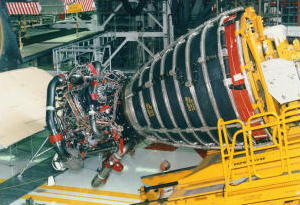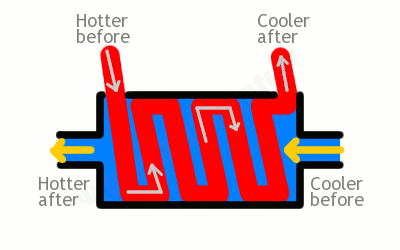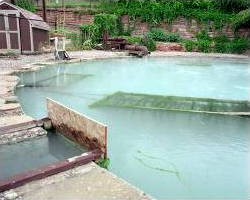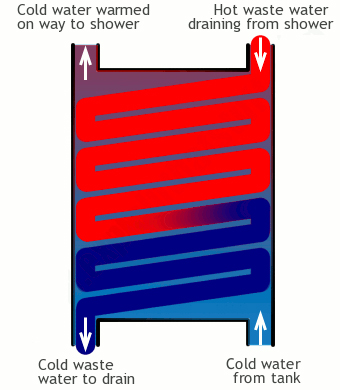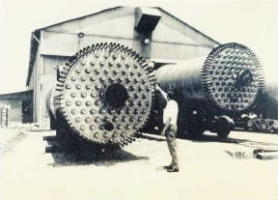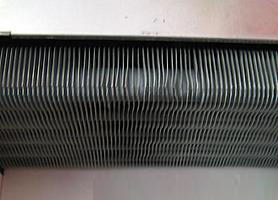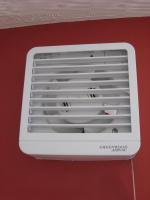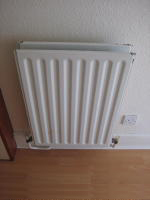INTRODUCTION
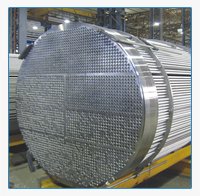 With holdling years of experience in the world of Metal Market with constant quality service and customer satisfaction, Sunflex Metal Industries would like to continue establishing business relations with reputed concern like yours. We assure you that you will certainly find in our products quality and rate most competitive at right time with excellent services. Your satisfaction is the award for our good quality and service.
With holdling years of experience in the world of Metal Market with constant quality service and customer satisfaction, Sunflex Metal Industries would like to continue establishing business relations with reputed concern like yours. We assure you that you will certainly find in our products quality and rate most competitive at right time with excellent services. Your satisfaction is the award for our good quality and service.
Seamless tubes for heat exchangers
Standards and steel grades,
Tube sizes acc. to DIN 28180,
Tube sizes acc. to ASTM A179,
Tube sizes acc. to BS, NF A, UNI, STN, ČSN, GOST standards,
Tube sizes acc. to EN 10216,
Tube sizes acc. to JIS.
Heat exchanger tubes are made using the cold rolling process and the semi-finished product for these are used rolled steel tubes. Heat exchanger tubes are used in energy and chemical industry for heating the buildings, water etc. The heat exchanger tubes make it possible to transfer thermal energy from one media to another. The heat transfer may be linked with phase transformation of the media. Overview of the dimensional standards and the technical-delivery conditions according to which these tubes are manufactured and supplied is shown in a separate overview.
Dimensions of the heat exchanger tube
The outside diameter of the heat exchanger tubes ranges from 16 mm to 51 mm according to DIN 28180 and from ½ inch (12.7 mm) to 3 inches (76.2 mm) according to ASTM A179 The tubes for the heat exchangers may be supplied also in compliance with other standards starting with 4 mm. Detailed overview is shown in tables and according to BS, NF A, UNI, STN, ČSN, GOST standards, according to EN 10216 and according to JIS standards.
Types of steel for heat exchanger tubes
Tubes for the heat exchangers are made of the following steels according to EN 10216-2: P235GH, according to DIN 1629: St 37.0, DIN 17175: St35.8, 15Mo3, DIN 17173: TTSt35N and according to ASTM A179. Additional types of steel according to BS 3606, NF A 49-215, UNI 5462, GOST 550, GOST 1060, JIS 3461, JIS 3462, STN 42 0251 and ČSN 42 0251 together with its chemical composition and mechanical properties are shown in a separate overview. Steel is manufactured in electric arc furnace and it is killed. Other types of steel are possible to deliver upon request.
Delivery condition and tubes surface of the heat exchanger tube
Tubes are supplied according to agreed standards. The cold drawn tubes after the final forming go through thermal processing in shielding gas –normalizing.
Tubes length destined of the heat exchanger tube
Upon request the heat exchanger tubes may be supplied in length up to 18.3 meters.
Straightness of heat exchanger tube
Straightness deviation for the whole length of a tube L can not exceed value of 0.0015 x L. In conversion to the 1 meter length it can not exceed 3 mm.
Ends of the heat exchanger tube
The ends of the tubes are vertical to the longitudinal axis and are without burrs.
Marking of the tubes and tube bundles
Tubes are marked by spraying the agreed upon data. Tube bundles are marked with labels with the agreed upon data.
Surface protection of the heat exchanger tube
The inner and outer surface is protected by a light oil application. Upon request it may be protected with and easy removable oil application on the outer side. The tube ends may be enclosed by a plastic plug.
Packaging of the heat exchanger tubes
The tubes are usually packaged into bundles of a hexagonal cross-section and are bound with a steel band that has a paper underneath. The package is wrapped with a plastic sheet. Upon request the tubes may be supplied in wooden crates.
Testing of the heat exchanger tube
Besides the prescribed mechanical tests, each tube is tested with leak tightness test by eddy current. Based on an agreement it is possible to do the hydrostatic testing or ultrasound testing.
Heat exchangersHave you ever watched wisps of smoke drifting from smokestacks and wondered how much energy they're uselessly pumping into the air? Maybe less than you might think! Saving energy is a huge and costly problem for factory bosses and it's one reason they often install devices called heat exchangers to salvage as much heat as possible from waste gases. Heat exchangers have lots of other familiar uses too. Engines in cars, ships, and planes use heat exchangers to work more efficiently, and if you have a refrigerator or an air-conditioner in your home, those are using heat exchangers too. So what exactly are heat exchangers and how do they work? Let's take a closer look! What is a heat exchanger? Suppose you have a gas central heating furnace (boiler) that heats hot-water radiators in various rooms in your home. It works by burning natural gas, making a line or grid of hot gas jets that fire upward over water flowing through a network of pipes. As the water pumps through the pipes, it absorbs the heat energy and heats up. This arrangement is what we mean by a heat exchanger: the gas jets cool down and the water heats up. A heat exchanger is a device that allows heat from a fluid (a liquid or a gas) to pass to a second fluid (another liquid or gas) without the two fluids having to mix together or come into direct contact. If that's not completely clear, consider this. In theory, we could get the heat from the gas jets just by throwing cold water onto them, but then the flames would go out! The essential principle of a heat exchanger is that it transfers the heat without transferring the fluid that carries the heat.
Photo: How a simple heat exchanger works. A hot fluid (shown in red) flows through a tube coiled inside a larger shell through which another, colder fluid (shown in blue) is running in the opposite direction. Heat is exchanged by the fluids: the hot fluid cools down and the cold fluid warms up, without them actually coming into contact and mixing.
What are heat exchangers used for?
You can see heat exchangers in all kinds of places, usually working to heat or cool buildings or helping engines and machines to work more efficiently. Refrigerators and air-conditioners, for example, use heat exchangers in the opposite way from central heating systems: they remove heat from a compartment or room where it's not wanted and pump it away in a fluid to some other place where it can be dumped out of the way. Photo: A heat pump extracts heat from a natural geothermal hot spring, used to heat buildings at Hot Springs Lodge and Pool in Glenwood Springs, Colorado. The exchanger is the algae-covered plate full of copper tubes in the center of the water. In power plants or engines, exhaust gases often contain heat that's heading uselessly away into the open air. That's a waste of energy and something a heat exchanger can certainly reduce (though not eliminate entirely—some heat is always going to be lost). The way to solve this problem is with heat exchangers positioned inside the exhaust tail pipes or smokestacks. As the hot exhaust gases drift upward, they brush past copper fins with water flowing through them. The water carries the heat away, back into the plant. There, it might be recycled directly, maybe warming the cold gases that feed into the engine or furnace, saving the energy that would otherwise be needed to heat them up. Or it could be put to some other good use, for example, heating an office near the smokestack.
In buses, fluid used to cool down the diesel engine is often passed through a heat exchanger and the heat it reclaims is used to warm cold air from outside that is pumped up from the floor of the passenger compartment. That saves the need for having additional, wasteful electric heaters inside the bus. A car radiator is another kind of heat exchanger. Water that cools the engine flows through the radiator, which has lots of parallel, aluminum fins open to the air. As the car drives along, cold air blowing past the radiator removes some of the heat, cooling the water and heating the air and keeping the engine working efficiently. The radiator's waste heat is used to heat the passenger compartment, just like on a bus. If you have an energy-efficient shower, it might have a heat exchanger installed in the wastewater outlet. As the water drips past your body and down the plug, it runs through the copper coils of a heat exchanger. Meanwhile, cold water that's feeding into the shower to be heated pumps up past the same coils, not mixing with the dirty water but picking up some of its waste heat and warming slightly—so the shower doesn't need to heat it so much. Photo: How a shower waste-water heat exchanger works. Hot outgoing waste-water warms incoming cold water, reducing the energy you need to get the water hot and making the whole thing more efficient. Types of heat exchangersAll heat exchangers do the same job—passing heat from one fluid to another—but they work in many different ways. The two most common kinds of heat exchanger are the shell-and-tube and plate/fin. In shell and tube heat exchangers, one fluid flows through a set of metal tubes while the second fluid passes through a sealed shell that surrounds them. That's the design shown in our diagram up above. The two fluids can flow in the same direction (known as parallel flow), in opposite directions (counterflow or counter-current), or at right angles (cross flow). Plate/fin heat exchangers have lots of thin metal plates or fins with a large surface area (because that exchanges more heat more quickly).
Heat exchanger... or not?You've seen that website called hot or not? Well here's my equivalent: heat exchanger or not. If you're still confused about what a heat exchanger is, you might find it helpful to think about two examples of everyday, heat-moving devices that transport heat but aren't really heat exchangers.
A kitchen or bathroom extractor fan (left) is designed to suck hot, moist air from your home and dump it outside. Since it takes one fluid (the hot air in your home) and mixes it with another one (the cold air outside), it's not a heat exchanger. It's just a heat extractor. A hot-water radiator (right) is more tricky. Hot water is piped through it from a gas central heating boiler, giving up some of its heat to the air in the room in the process and returning to the boiler for more. This is a sort of heat exchanger because the heat from one fluid (the hot water in the pipe) is being given to another fluid (the cold air in the room) without the two fluids mixing. Some people would say this isn't a heat exchanger because the second fluid (the cold air) isn't contained and isn't being channeled or pumped past the first one in a systematic way. Then again, however you look at it, heat is being exchanged! Share This Page Heat Exchanger Pipes & Tubes Inventory Standards and steel grades, Our main markets are: |


